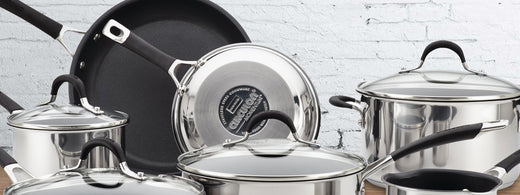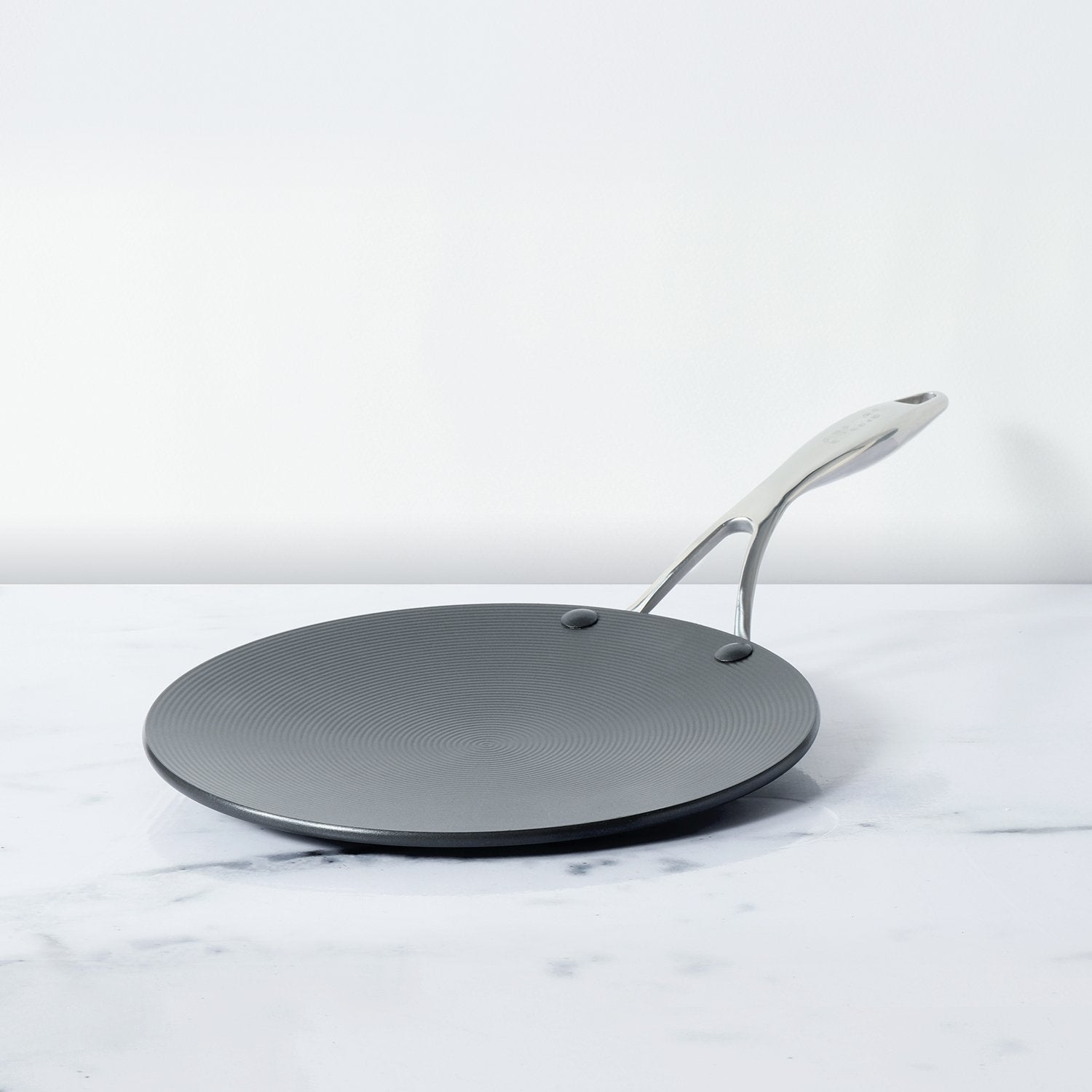Anodized tawas are known for their durability and resistance to scratches, making them ideal for the demands of Indian cooking, which often involves the use of metal utensils and high heat.
Table of Contents
What Is An Anodised Tawa?
An anodized tawa, also known as an anodized griddle or pan, is a cooking utensil made from aluminum that has undergone a specific anodizing process. Anodization is an electrochemical process that enhances the natural oxide layer on the surface of aluminum, making it more durable, non-reactive, and resistant to corrosion.
The anodization process involves immersing the aluminum tawa in an electrolytic solution and passing an electric current through it. This creates a controlled oxidation on the surface, resulting in a hard and smooth layer of aluminum oxide. This oxide layer not only increases the durability of the tawa but also makes it non-stick and resistant to sticking, rust, and staining.
Key Features Of An Anodised Tawa:
- Non-Stick Properties: The anodized surface of the tawa becomes naturally non-stick, reducing the need for excessive oil or butter when cooking. This makes it a healthier option for preparing various dishes.
- Durability: Anodized aluminum is harder than untreated aluminum, making the tawa resistant to scratches, dents, and other forms of damage.
- Even Heat Distribution: Anodized tawas usually offer excellent heat distribution, ensuring that your food cooks evenly without hotspots.
- Easy to Clean: The non-stick and non-reactive nature of anodized aluminum makes cleaning up after cooking a breeze.
- Versatility: Anodized tawas can be used for a wide range of cooking methods, from making flatbreads like chapatis and rotis to cooking dosas, pancakes, and more.
- Healthier Cooking: Since less oil is required due to the non-stick surface, anodized tawas are often considered a healthier option for cooking.
Use and Care:
When using an anodized tawa, it's recommended to use utensils that are compatible with non-stick surfaces to avoid scratching or damaging the anodized layer. Additionally, while anodized tawas are generally durable, it's important to follow the manufacturer's care instructions to maintain their longevity.
Is Anodised Tawa Strong?
Yes, an anodized tawa is generally quite strong and durable. The anodization process involves creating a layer of aluminum oxide on the surface of the aluminum material through an electrochemical process. This layer of aluminum oxide is not only hard but also provides several benefits that contribute to the strength and durability of the tawa:
- Hardness: The anodized layer is significantly harder than the original aluminum surface. This hardness helps protect the tawa from scratches, dents, and other forms of physical damage.
- Corrosion Resistance: The aluminum oxide layer acts as a barrier that prevents the underlying aluminum from coming into contact with moisture or acidic ingredients. This makes the tawa resistant to corrosion and rust.
- Non-Reactivity: Anodized aluminum is non-reactive with acidic or alkaline foods, ensuring that the tawa won't react with ingredients and affect the taste or quality of the cooked food.
- Non-Stick Properties: The anodized surface is naturally non-stick, reducing the need for excessive oil or fats when cooking. This also prevents food from sticking to the surface, which can help prevent damage during cooking and cleaning.
- Heat Distribution: Anodized tawas often offer even heat distribution, ensuring that food cooks uniformly and preventing localized hotspots that could potentially weaken the material.
- Easy to Clean: The non-stick and non-reactive properties of the anodized surface make cleaning the tawa relatively easy, which can contribute to its longevity.
While anodized tawas are indeed strong and durable, it's still important to use utensils that are compatible with non-stick surfaces to avoid scratching or damaging the anodized layer. Additionally, following the manufacturer's care instructions will help maintain the tawa's strength and durability over time.
Similarities Between Anodised Tawa And Non Stick Tawa:
- Non-Stick Properties: Both anodized and non-stick tawas have surfaces that are designed to be non-stick. This means that food is less likely to stick to the surface during cooking, making flipping and transferring dishes easier.
- Reduced Oil/Fats: Because of their non-stick properties, both types of tawas require less oil or fats for cooking. This can contribute to healthier cooking by reducing the amount of added fats.
- Ease of Cleaning: The non-stick surfaces of both tawas make them easy to clean. Food residue is less likely to adhere to the surface, and most of the time, a simple wipe with a cloth is sufficient.
- Uniform Heating: Both types of tawas often offer even heat distribution, which helps ensure that food cooks uniformly and prevents hotspots.
- Versatility: Both non-stick and anodized tawas can be used for a variety of cooking methods, including preparing dishes like chapatis, dosas, pancakes, and more.
- Non-Reactivity: The non-stick and anodized surfaces are non-reactive with acidic or alkaline foods, preventing the transfer of unwanted flavors to your dishes.
- Healthier Cooking: Due to the reduced need for added fats and oils, both types of tawas can contribute to healthier cooking practices.
Difference Between Anodised Tawa And Non Stick Tawa:
Anodized tawas are generally more durable and scratch-resistant compared to traditional non-stick coatings, but they may not provide the same level of extreme non-stick performance as certain high-quality non-stick coatings. Additionally, anodized tawas are often compatible with metal utensils, whereas non-stick coatings can be damaged by metal utensils.











Leave a comment